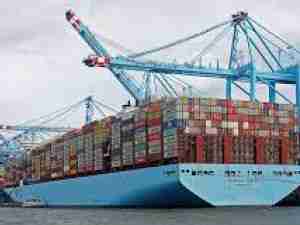The cost of insuring vessels that will transit the Red Sea jumped again this week after mounting attacks in the region forced some ships to avoid the vital waterway, underscoring the need to secure an area that’s pivotal to global trade.
Cover has now surged to about 0.5% of the value of a ship’s hull, according to three people involved in the market. That’s a sharp increase from earlier this month, when costs were about 0.1% to 0.2% of the hull value.
The US and its allies are bringing together a new task force to tackle Iran-backed Houthis who’ve stepped up attacks on the merchant fleet in a new risk for the global economy. They’re also weighing up possible military strikes, but diplomacy remains the preferred approach for now, according to people familiar with the matter.
So-called war risk insurance is generally quoted as a percentage of the value of the ship for the period that a vessel is trading in risky areas. That figure has climbed more than tenfold from before the attacks escalated in earnest. On Monday, London insurers expanded the regions within the Red Sea that are designated as risky — a move that effectively boosts the area in which war cover is needed.
A.P. Moller-Maersk A/S and most of the other top container shipping lines have said they will pause shipments through the area. Crude prices rose on Monday when oil and gas giants BP Plc and Equinor ASA said they would take a similar approach — adding to global inflation risks. Many are choosing to sail thousands of miles around the tip of Africa instead.
“Both options of increased premiums and rerouting around Africa will see a knock-on effect on the price of goods,” said Toby Vallance, Executive Committee Member of the London Forum of Insurance Lawyers.
For a vessel costing $100 million, an expense of 0.5% translates to an insurance cost of $500,000 per voyage. This applies to merchant ships entering routes in the Southern Red Sea or Gulf of Aden.
The disruption in marine traffic caused by the Houthi attacks, spurred by the ongoing Israel-Hamas war, means that both of the world’s main arteries of global trade — the Panama and the Suez Canal — are now facing their own snarls, threatening the smooth passage of goods around the world.
The disruption will disrupt supply chains as vessels reach their destinations later than anticipated and then take longer to get back to pick up subsequent cargoes. When a container ship blocked the Suez Canal completely in 2021, it took months for trade to normalize again.
About 90% of global trade moves by sea, and about 12% of that goes through the Suez.










